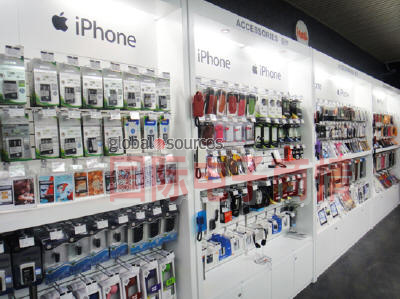
关键字:智能手机 手机配件
“智能手机的渗透率日益增加,直接推动了配件设计向智能手机转变,这将推高消费者互动水平、产品附加值以及品牌认知度。” ABI Research的高级分析师Michael Morgan表示,“对于智能手机市场的新进入者而言,若想瓜分先入者的市场份额,就必须提高自己的品牌知名度。而在这个大众市场里,开发新奇有趣的配件对于提升自己的品牌定位是非常有效的。”

对于功能手机市场而言,平均每台手机的配件消费为28.17美元;而在智能手机市场,平均每台手机的配件消费为56.18美元。造成这种差异的原因是,智能手机配件的平均价格比功能手机贵,且智能手机消费者比功能手机消费者购置的配件更多。
相比于功能手机配件往往是基础型的必需品,智能手机配件越来越多地借助于设备的应用程序和通信协议以提升设计复杂性,并日趋成为服务交付平台。
ABI Research的移动设备董事Jeff Orr补充:“随着智能手机价值的扩大,配件市场也需要相应提升产业水平,如产品合约化、定制化等,并需提前预测消费习惯的变化并作出相应调整。”
ABI Research“手机配件市场报告”,重点分析关键的手机配件市场,包括机内及下游配件。同时,报告还研究手机配件市场的市场驱动力和增长障碍,收购渠道,技术趋势,未来的市场潜力等。
Smartphone Accessory Revenues Valued at $20 Billion in 2012
Smartphones will drive $20 billion in aftermarket accessory revenues in 2012, accounting for more than half of the $36 billion that all aftermarket handset accessories will produce. By 2017, smartphone accessories will grow to $38 billion in revenues, while feature phone accessory revenues decline to $12 billion.
“The increasing penetration of smartphones is driving a shift in accessory design toward smart accessories that drive higher levels of consumer interaction, product value, and brand recognition,” says Michael Morgan, senior analyst, devices, applications & content. “For new market entrants, developing brand recognition is paramount in capturing market share from the incumbents. This is best accomplished by the development of engaging, innovative accessories that extend the value proposition of today’s mass market accessories.”
Feature phone consumers will spend an average of $28.17 on accessories per device, while smartphone owners will spend $56.18 on accessories per device. The difference in spending is driven by a combination of consumers spending more per accessory and purchasing more accessories for smartphones as compared to feature phone owners.
While feature phone accessories tend to be basic commodity-type products, smartphone-focused accessories are increasingly looking to leverage on device applications and communication protocols that can increase the design complexity and allow the accessories to become service delivery platforms.
“As smartphones continue to expand the value of mobile handsets, accessories will need to equally deliver higher levels of product engagement, customization, and predict consumers’ shifting mobility use cases,” adds Jeff Orr, practice director, devices, applications & content.
ABI Research’s report, “Mobile Handset Accessories,” focuses on key handset accessories and the market for these products, including in-depth analysis for both in-box as well as aftermarket handset accessories. It also examines key market drivers and barriers to growth, acquisition channels, technological trends, and future market potential for handset accessories.